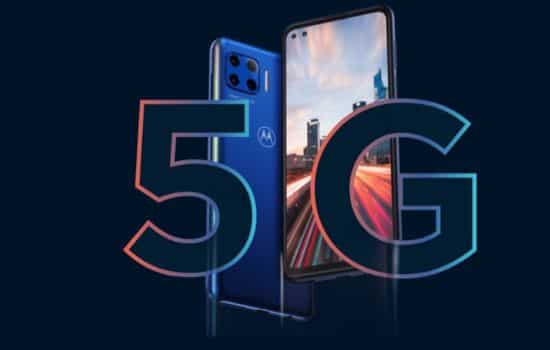5G Network & Device Check
★ 4.1Information on size, installation and warranty may vary as updates are made in official stores.
5G is much more than just a new generation of mobile networks. It's a technological revolution that promises to transform the way we live, work, and connect with the world.
With ultra-fast speeds, near-zero latency, and massive capacity for connected devices, 5G will usher in a new era in telecommunications.
In this article, we'll explore what 5G is, how it works, and what impact it will have on our lives, focusing on its applications and benefits across various industries.
5G is not just an incremental improvement over 4G, but a fundamental shift that will enable new technologies and experiences previously only imaginable. From real-time connectivity for autonomous vehicles to the possibility of creating smart cities, 5G will usher in an era of innovation that will impact every aspect of everyday life.
This new technology will change the way we interact with the world, creating a deeper and faster connection between devices, people, and machines.
What is 5G? 🌐
5G, or the fifth generation of mobile networks, is the technology that will succeed 4G and significantly improve the speed, reliability, and efficiency of wireless networks. While 4G was a major game-changer at the time, 5G will take connectivity to a whole new level. With 5G, we will not only see improved download speeds, but it will also open up new possibilities for the creation of completely innovative applications and services.
Unlike previous networks, 5G is not only designed to improve mobile connectivity, but also to connect a vast array of devices, from smartphones to smart home appliances, autonomous vehicles, and even industrial machines. Simply put, 5G is the foundation upon which many of the technologies that will define the future will be built.
Key Features of 5G 🚀
5G is designed to offer faster, more reliable, and more efficient connectivity than ever before. Some of the most notable features of this technology include:
1. Faster Connection Speeds ⚡
5G speeds will be up to 100 times faster than 4G. While 4G offers speeds of up to 1 Gbps, 5G will allow speeds of up to 10 Gbps. This means you can download an HD movie in seconds! 📽️
| Technology | Maximum Download Speed |
|---|---|
| 4G | 1 Gbps |
| 5G | 10 Gbps |
2. Nearly Zero Latency ⏱️
Latency is the time it takes for data to travel from one point to another. With 5G, latency of just 1 millisecond is expected, enabling a virtually lag-free, real-time experience. This will be crucial for applications such as high-intensity online gaming, augmented reality (AR), and autonomous vehicles.
3. Connecting Massive Devices 🔗
5G will not only focus on mobile phones, but also on massive device connectivity. It is estimated that 5G will allow up to one million devices per square kilometer to be connected. This is ideal for the development of smart cities, where sensors and devices will connect to the network to do everything from optimizing traffic to monitoring air quality.
4. Autonomous and Intelligent Networks 🤖
5G is more than just speed; it will also be an intelligent network. Using artificial intelligence (AI) and other technologies, 5G networks will be able to manage themselves, ensuring a more efficient, personalized, and secure experience for users. 🌟
How Does 5G Work? 🛠️
5G works using high-frequency millimeter waves, which allow for greater data transmission capacity. Unlike previous networks, which relied primarily on low and medium radio wave frequencies, 5G uses much higher frequencies, known as millimeter waves. These waves allow for greater data transfer, but they also require a much denser antenna infrastructure, which means more complex network deployment.
1. MIMO (Multiple Input, Multiple Output) Technology 📡
5G uses MIMO technology, which involves multiple antennas sending and receiving data simultaneously. This significantly increases network capacity, allowing more people to stay connected without affecting speed or signal quality.
2. Low Latency and High Reliability Networks 🔌
5G's low latency is achieved not only through advanced antenna technology but also through the use of distributed networks close to the user. This improves application response times, which is vital for applications such as remote surgery, autonomous vehicles, and online gaming.
Applications and Benefits of 5G 🌍
5G will not only change the way we connect to the internet, but it will also have a significant impact on several industries, from automotive to healthcare and education. Here are some of the most affected areas:
1. Autonomous Vehicles 🚗
Autonomous vehicles rely on real-time connectivity to make fast and accurate decisions. With 5G's low latency, self-driving cars will be able to communicate with each other and with city infrastructure (traffic lights, traffic signals, etc.), improving traffic safety and efficiency.
2. Medicine and Health 🏥
5G will enable advances in telemedicine, such as remote diagnostics and robotic surgery. Transmission of high-resolution medical images, such as MRIs or CT scans, will be faster and more efficient. This will benefit rural communities and patients who cannot access specialized medical care.
3. Augmented and Virtual Reality (AR/VR) 🕶️
5G will completely change the AR and VR landscape, enabling more immersive and higher-quality experiences. From professional training to entertainment, the possibilities are endless. Users will be able to enjoy real-time AR and VR experiences without interruptions or delays.
4. Smart Cities 🏙️
Smart cities will benefit greatly from 5G. Thanks to massive device connectivity, cities will be able to better manage resources, from lighting to public transportation. Street sensors will be able to measure traffic, air quality, noise levels, and more, improving the quality of life in cities.
5. Industry 4.0 🏭
5G will be fundamental to industrial automation. Robots, machines, and connected devices will be able to communicate with each other in real time, optimizing production and reducing costs. Smart factories will become a reality with 5G, increasing efficiency and safety.
5G Challenges ⚠️
While 5G has enormous potential, it also presents certain challenges that must be addressed before its global deployment. These include:
1. Cost and Infrastructure Deployment 💰
5G requires a dense infrastructure of antennas and base stations. This can be expensive and complex to implement, especially in rural or less-developed areas. However, the long-term benefits far outweigh these challenges.
2. Security and Privacy 🔐
As more devices connect to the 5G network, security will be a major concern. New security measures will need to be implemented to protect personal data and ensure user privacy.
3. Inequality in Access 🌍
Although 5G promises to improve global connectivity, there are concerns about how developing countries will be able to access this technology. The rollout of 5G infrastructure in rural and less-developed regions could be slow.
See also:
- 🌪️ Wicked 2: Everything we know about the highly anticipated sequel
- 🏆 App to watch the Grammys: how to enjoy the gala from your cell phone
- 🎮 GTA 6 ADIADO NOVAMENTE
- 🧟 The Mummy Returns: The return of a classic and the return of its stars
- Global expansion of the otaku phenomenon: anime communities, fashion, economy and culture around the world
Conclusion: The Future Is Here 🌟
5G is much more than just a connectivity improvement. It's the first step toward a more interconnected, more efficient, and smarter world. With its incredible speeds, low latency, and ability to connect millions of devices simultaneously, 5G promises to transform every industry, from automotive to medicine, education to entertainment. While there are still challenges to overcome, the future of connectivity is closer than ever.
Are you ready to experience 5G? 🌐📲







